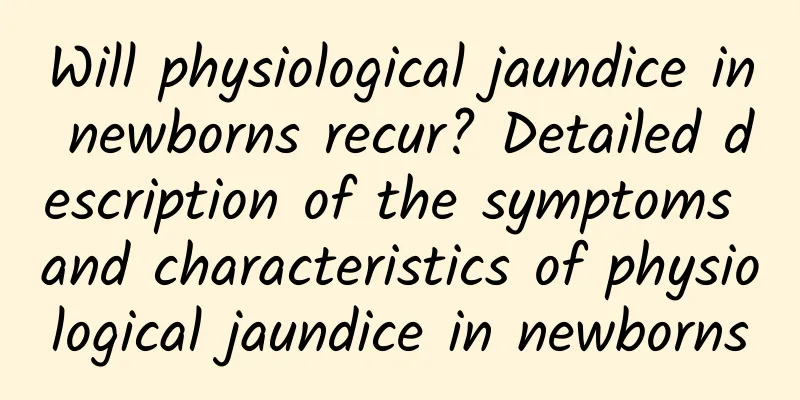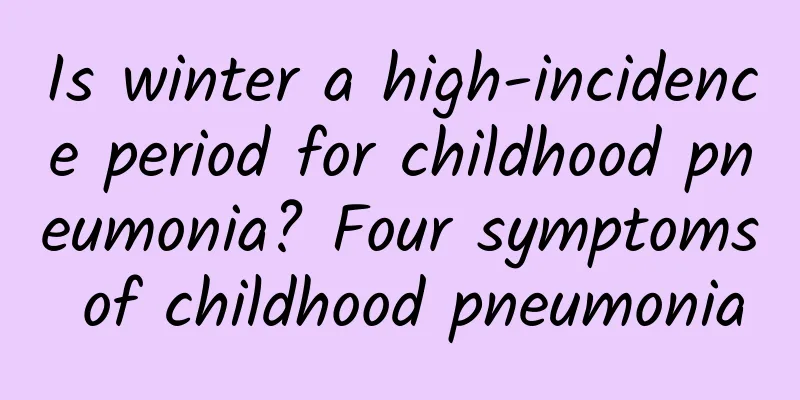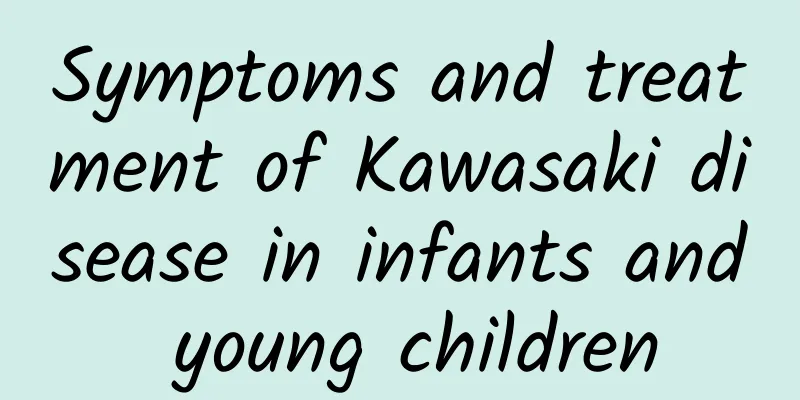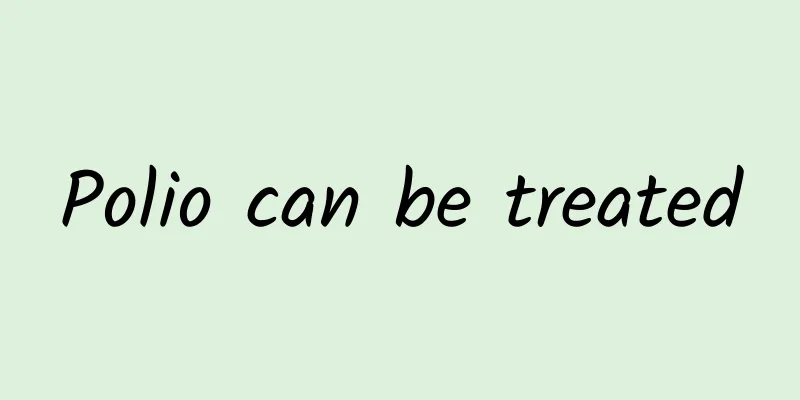Will physiological jaundice in newborns recur? Detailed description of the symptoms and characteristics of physiological jaundice in newborns

|
Neonatal physiological jaundice usually appears two to three days after the baby is born, and usually reaches a peak at four to five days. After the peak, the jaundice will slowly subside as time goes by. When a newborn has physiological jaundice, the skin will generally appear as a pale yellow symptom. At this time, parents can let the baby get more sun to speed up the disappearance of jaundice. In addition, increasing the number of feedings can also speed up the disappearance. Neonatal jaundice is divided into physiological and pathological types. Compared with pathological jaundice, physiological jaundice is less harmful to babies. Most newborns suffer from jaundice after birth. In order to distinguish the nature of jaundice and take reasonable measures in time, it is necessary for parents to learn the symptoms of physiological jaundice in newborns. 1. Self-disappearance. Physiological jaundice has the characteristic of self-disappearance. Generally, it will gradually disappear two weeks after the baby develops jaundice. However, due to the different physical constitutions of each person, the disappearance time will also be different. For example, the disappearance period of premature babies will be longer, generally about three weeks. 2. The skin is pale yellow. The main symptom of neonatal jaundice is that the baby's skin is pale yellow, and most of the time, it appears on the baby's face and upper body. Normally, physiological jaundice will not affect the baby's growth and development. Therefore, when the baby has physiological jaundice, as long as the body temperature and appetite are normal, it can be preliminarily judged as physiological jaundice. 3. Time of appearance. Physiological jaundice usually appears two to three days after the baby is born, and the peak of jaundice is four to six days. As time goes by, jaundice will gradually subside and will not reappear. Therefore, physiological jaundice in newborns is not recurrent. In summary, physiological jaundice in newborns will not recur, and will not reappear after it subsides, and will not affect the baby's growth and development, so parents do not need to worry too much. However, parents need to pay attention to the care of babies when they have jaundice. Reasonable care can make jaundice disappear as soon as possible, such as letting the baby bask in the sun more often, and adopting the principle of small amounts and multiple times in feeding to promote gastrointestinal motility and allow toxins in the body to be discharged as soon as possible, thereby achieving the effect of quickly eliminating jaundice. |
>>: How should neonatal jaundice be classified? What are the causes of neonatal jaundice?
Recommend
What should I do if my child has recurrent eczema? What are the treatments for recurrent eczema in children?
When there is a significant change in the weather...
Is acute mumps contagious in children?
Acute mumps is contagious, especially in the earl...
Treatment of late-stage kidney disease in children
Children are the future of the country. Whether c...
How to properly care for babies with pneumonia? Pneumonia in children has three serious consequences
Pediatric pneumonia is a common respiratory disea...
Is bacterial mumps contagious?
Is bacterial mumps contagious? Bacterial mumps is...
How many days does it usually take for hand, foot and mouth disease to heal? Can hand, foot and mouth disease be contagious to adults?
How many days does it usually take for hand, foot...
How to treat a baby with a cough How to treat a baby with a cough
If babies are not properly cared for, they are pr...
What causes kidney disease in children?
The main cause of childhood kidney disease is clo...
What is the most serious hazard of Kawasaki disease?
Many parents lack a correct understanding of thei...
Does polio last long?
Polio does not directly affect the life expectanc...
Can Hirschsprung's disease be cured? Treatment of Hirschsprung's disease
Hirschsprung's disease refers to a condition ...
What should I do if my child has a dry cough?
When children have dry coughs, parents will choos...
What should I do if my baby has a lot of phlegm when coughing? What are the treatments for my baby's cough and phlegm?
When babies cough and have a lot of phlegm, it is...
Is pneumonia fatal in children?
Neonatal pneumonia is a common disease in the neo...
What should I do if my baby has a cough? How should I use medicine if my baby has a cough?
A baby's cough is more difficult to treat tha...









